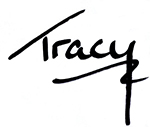The Way to Find Where Your Story Starts
Stop Backing Off and Dive In!

Let me paint you a familiar scene: You’re writing the first chapter of your novel, and the temptation to lay out all the things is overwhelming. You know, the backstory, the history, maybe a tour of the protagonist’s charming little town? It’s full of interesting tidbits—at least to you—and you figure the reader needs to understand all this context so they can “get it.”
Here’s the problem: They don’t. Not yet.
Now, before we dive in, let’s talk about The Lord of the Rings. It’s a classic, beloved by millions, but if J.R.R. Tolkien were trying to publish that today, he’d probably get so many rejection letters.
Why? Because that opening is the textbook example of what not to do. It’s packed with backstory, history, hobbit genealogy, and all the day-to-day life in the Shire—pages and pages before anything resembling a problem shows up.
Tolkien gets away with it because hobbits are ridiculously charming, and, well, he was Tolkien. He could pull it off with pure brilliance and world-building magic.
But let’s be real—modern readers won’t sit still for that. They want to jump into the action, not take a leisurely stroll through Hobbiton’s history. So unless your world-building is on Tolkien-level genius (no pressure), you’re better off skipping the extended prologue.
Your Story Starts with a Problem
The real way to hook your reader? Start with the problem. The moment something goes wrong, or the character is dealing with a situation that shows us who they are—and that is key. It doesn’t even have to be the main problem of your story (though it can be). This is about thrusting your character into some kind of conflict, challenge, or internal struggle that makes the reader lean in and ask, “Okay, what happens next?”
Maybe your protagonist is scrambling to meet a work deadline that forces them into a choice they’re uncomfortable with. Maybe they’re stuck in traffic, having a full-blown existential crisis over what they should be doing with their life. Or perhaps their dog just ate the neighbor’s prize-winning roses, and now they have to figure out how to apologize while keeping said dog from further disaster.
Whatever the problem, it’s much more effective at pulling your reader into the story than three pages of your protagonist’s routine, punctuated by an unnecessary history lesson. Trust me, no one ever picked up a novel hoping to read about the protagonist’s “ordinary life” in painful detail. Readers are here for the story—the drama, the stakes, the conflict.
Why We Back Off (And Why You Shouldn’t)
There’s a reason so many writers back away from this advice: fear. Fear that the reader won’t stick around if they don’t have all the information upfront. Fear that if you don’t painstakingly build the world first, the story will crumble. Fear that your character’s motivations won’t make sense if you don’t explain their entire childhood by page two.
And maybe, underneath it all, there’s a lack of trust. You don’t trust that your reader will be smart enough to figure things out as they go along. Or maybe you don’t trust yourself to weave in that backstory naturally later on, when it’s actually relevant.
Let me reassure you: You don’t need to tell your reader everything up front. They’re more than capable of figuring things out. In fact, they’ll appreciate a little mystery. Let them wonder about the backstory. Feed it in later, in drips and drabs, when it’s truly needed—if it’s needed at all.
Starting with the Problem: A Quick Guide
So how do you actually start your story in the right place? Here are a few tips:
1. Identify the problem – What’s the first issue your character is facing when the story opens? It could be something minor or something life-changing, but it needs to matter to them.
2. Cut the fluff – If your opening scene involves waking up, getting ready for work, or describing the local landscape without a hint of conflict, slash it. Save that space for action that pushes the story forward.
3. Show character through action – Let your character’s response to the initial problem give us the first glimpse of who they are. This is way more engaging than telling us about their childhood trauma or their job situation in an info dump.
4. Trust your reader – They’ll stick with you. You don’t need to convince them to care with pages of setup. Hook them with the problem, and they’ll want to learn more about your world and character as the story progresses.
Embrace the Uncertainty
Starting a story right where the problem kicks off requires a little leap of faith. It might feel uncomfortable at first, like you’re yanking the reader into a scene without warning. But here’s the beauty of it: that’s exactly what keeps them turning pages. The sooner you drop your character into conflict, the sooner your reader will be invested.
So, stop backing off. Let the problem lead. Everything else—backstory, world-building, even the protagonist’s coffee preference—can wait.
Your story doesn’t start in the comfort zone. It starts when the tension does.

Write More, Faster Than Ever Before | Are You Prolific?
Editing Your Next Novel? Mark Posey offers fast, writer-friendly edits with zero drama. Check out services »
